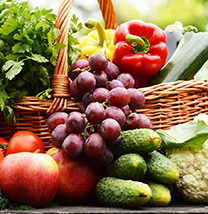
1. Buy only what you’ll eat. This sounds silly, but billions of tons of food go to waste each year from American kitchens—and this isn’t just the egg shells and potato peels. You may find yourself stocking up on salad supplies each week, only to throw out the gooey, smelly mess that developed in your produce drawer. Save by buying smaller portions or splitting larger portions with a friend!
2. Shop the sales. Sales change weekly, and often feature in-season produce and meats. The result? You can plan your meals for less! If you’re looking for a great deal on groceries in New Jersey, check out our weekly ad.
3. Double-duty. Part of the cost of preparing food at home is the cooking. Not only does this “spend” time, it uses resources on your stove. Save money and time by preparing foods that can do double-or triple-duty. For example, if you plan on roasting a chicken for dinner, get one big enough to make chicken soup out of the next day.
4. Shop the outer aisles. Center aisles contain non-perishables, which are often more expensive and less healthy than their fresh or frozen counterparts. Plus, when you stick to the outside edges of the store, you’re more likely to avoid the cookies, chips, and packaged foods that cost more.
5. Go meatless. One of the highest costs in many meals is meat, so consider another protein source. Most meat-based soups are just as good with beans or vegetables as a replacement, or consider a hearty vegetable such as eggplant, sweet potato, or squash to fill your savory needs. What are you waiting for? Start saving now!
Categories: Budgeting, Healthy Eating, Meal Planning















